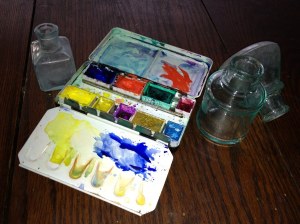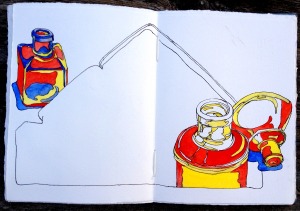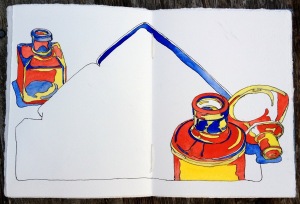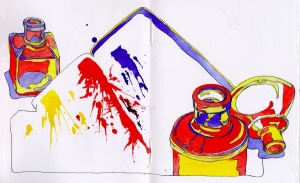Color schemes have become another fine-tuned skill in my toolbox. As with any tool, a lifetime can be spent learning new uses for tools.
Unexpected possibilities now present themselves during my morning practice of the Color Scheme Game.
Normally, I would continue the line drawing adding the pans of watercolor and the indications of the mixing wells. At this point, I stopped. There was something about the large, open shape of the palette without details that I liked. It gave contrast to the smaller shapes that describe the inkwells.
I decided to throw the die and paint in only the inkwells leaving me the option of drawing the pans of pigment before painting the palette shape. I came up with the Basic Triad Color Scheme with red as one of the colors.
I went one step further to paint the inside lip of the travel palette. I put the drawing aside until the next morning to see if I felt the same way about it. In the middle of the night I awoke with the idea of indicating the paint in the palette as splats rather than pans of pigment.
I’m pleased with the results and glad that I allowed for something new to happen.
Sketchbook Drawing: Glass Inkwells No. 18, Ink and Watercolor. Drawn first with fountain pen filled with Noodler’s Black ink followed by watercolor.
Color Scheme: Basic Triad of yellow, red and blue.
Limite palette: Cadmium Yellow Pale, Cadmium Red Light, French Ultramarine Blue














